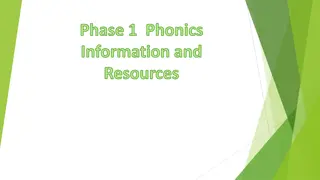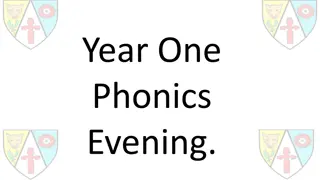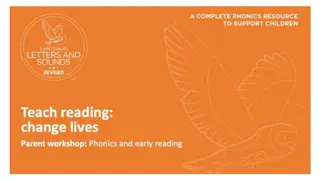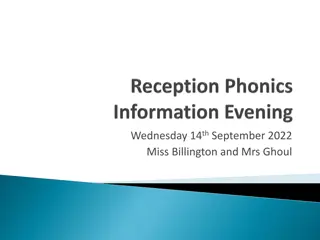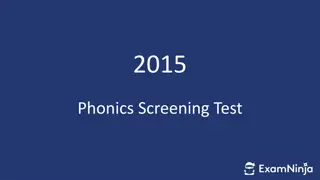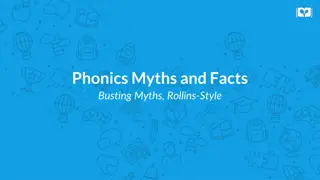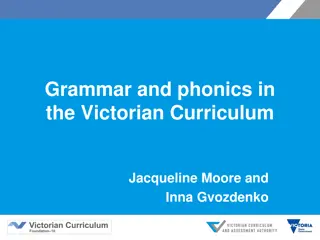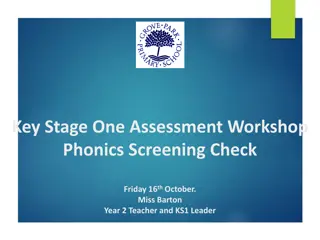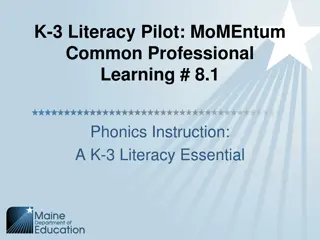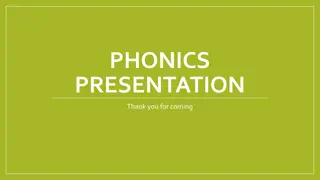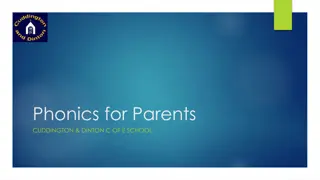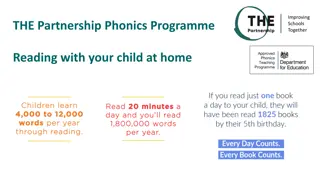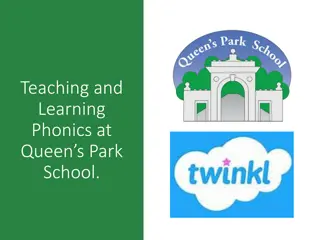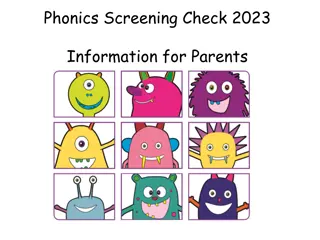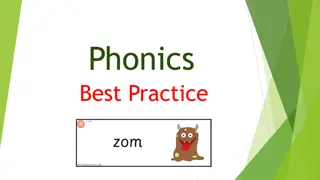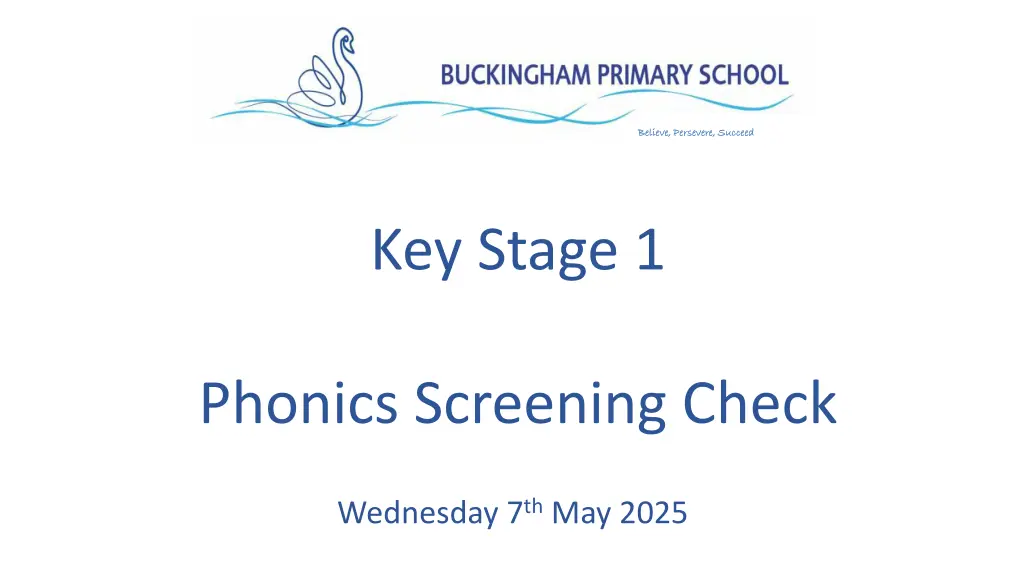
Phonics Screening Check for Key Stage 1 Students
Prepare your child for the upcoming Phonics Screening Check in May 2025. Understand the process, sections, and what to expect during this important assessment designed to evaluate phonic knowledge in Year 1 students.
Download Presentation

Please find below an Image/Link to download the presentation.
The content on the website is provided AS IS for your information and personal use only. It may not be sold, licensed, or shared on other websites without obtaining consent from the author. If you encounter any issues during the download, it is possible that the publisher has removed the file from their server.
You are allowed to download the files provided on this website for personal or commercial use, subject to the condition that they are used lawfully. All files are the property of their respective owners.
The content on the website is provided AS IS for your information and personal use only. It may not be sold, licensed, or shared on other websites without obtaining consent from the author.
E N D
Presentation Transcript
Believe, Persevere, Succeed Believe, Persevere, Succeed Key Stage 1 Phonics Screening Check Wednesday 7th May 2025
The Phonics Screening Check. Every year, except for during the pandemic, children in Year 1 are required to take part in a phonics screening check, to ensure they are reaching the required standard when it comes to their phonic knowledge.
When is the phonics screening check? The phonics screening check will take place during the week of Monday 9th June to Friday 13th June 2025. It is administered by a member of teaching staff who is known to the children, and trained in phonics.
The check typically takes between 4 and 9 minutes to complete though children can be given rest and movement breaks if needed. The check is designed to test the child's ability to decode and blend sounds, and their recall of taught phonemes. The idea is that this helps teachers to identify which children need additional support and intervention if there are any gaps in their phonic skills.
Children will be asked to read and pronounce a set of words made up of real words and nonsense words (also called pseudo words, alien words or non-words). There are two sections in the 40- word test. The first section is made up of simpler words, from the earlier stages of phonics learning
Section 1 Pseudo / alien words Checking Phase 2 and Phase 3 phonemes
Section 1 Real words Checking Phase 2 and Phase 3 phonemes
Section 2 Pseudo / alien words Checking all Phases are secure
Section 2 Real words Checking all Phases are secure
Since 2013 the pass mark for the check has been 32 out of 40 - any score above this means the child has achieved the expected standard. As a school we will report your child s score to you and confirm if they have met the threshold. Children who do not achieve the expected level will retake the test when they are in Year 2.
How do we prepare your child for the test? Daily phonics teaching using our Time for Phonics systematic, synthetic phonics scheme ensures that all children are taught all phonemes that they will come across in the test. They have also been taught the skills and techniques needed to decode and blend, including adding sound buttons to words. They experience mock screening checks and receive keep up support if needed. Phonics screening check games help practice the skills.
How can you help? Read regularly, familiarise yourself with the phonemes for each phase. Reinforce your child s school work with some at-home practice and access past papers: www.gov.uk/government/collections/national-curriculum-assessments- practice-materials Encourage your child to add sound buttons to help themselves and ask them to segment (split the word up into the different sounds) and blend (read the word as a whole) The children need to take their time and not guess, particularly if a word looks similar to a word that is familiar to them.




